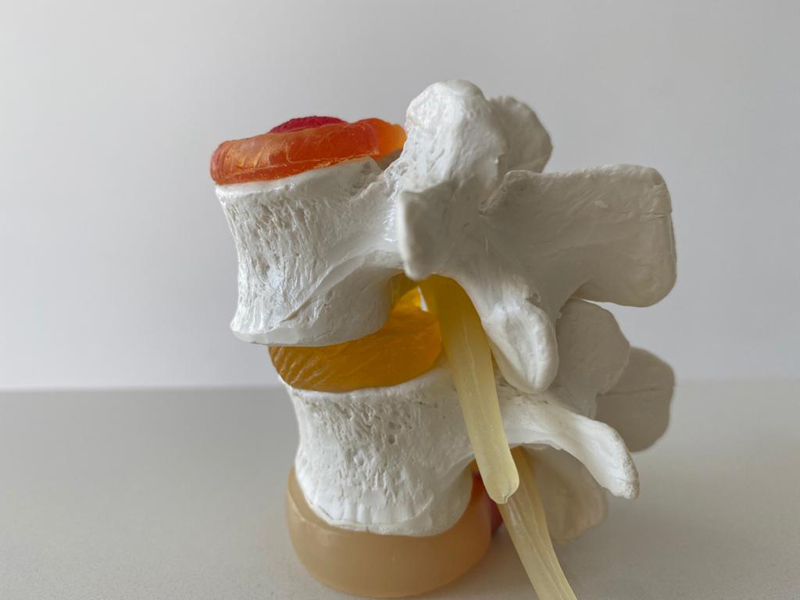Problems of… Listhesis or spondylolisthesis
Listhesis or spondylolisthesis is a condition that occurs when a vertebra leaves its position and moves forward or backward, from the vertebrae that was found below.
Listhesis and Chiropractic
It is a condition that is more common in the lower back, especially in the last ones (L4-L5-S1), although it can also occur in the thoracic area or even in the cervical region.
Problems of Listhesis
When displacement of the vertebrae occurs forward, it is called anterolisthesis and when it moves back it is called retrolisthesis or posterolisthesis. The risk is the serious compression of the medullary canal and its consequences. If it slides too far, the bone can trap the spinal cord or compress the nerves.
It can be unstable and cause low back pain, getting worse when putting on weight and movements. Another symptomatology it can cause is radiculopathy (pain in the legs if it is lumbar or in the arms if it is cervical), among other symptoms.
In addition, spondylolisthesis is often caused by spondylolysis.
Listhesis caused by spondylolysis
Spondylolysis is a pathology of the spine with rupture of the isthmus, just the posterior part, which normally joins the vertebral bodycalled the isthmus and that supports the spinous processes. (The isthmus is the transition region between the vertebral lamina and the partridge).
The cause of the fracture, mainly affecting the lumbosacral tract,are partly genetic or due to accident or trauma. It tends to affect mainly those who spend many hours sitting, athletes who practice diving, artistic gymnastics or high impact sport.
When spondylolysis and spondylolisthesis become symptomatic, they cause back pain at the lumbar level, muscle stiffness and spasms. Sometimes, in the presence of root compression, sciatica problems may appear (pain radiating from the buttock to the lower extremities).
Step by step treatment
Chiropractic treatment for spondylolisthesis with lysis or without isthmic lysis has very good results, avoiding difficult surgery, and its possible complications. The goal is to reduce or stabilize the spondylolisthesis and decompress the zone. Subsequently, strengthen muscle structure, balance the pelvis and stabilize the spinal and pelvic area. In addition, it is necessary to perform a decompression to prevent the facet or posterior joints from hypertrophying, conditioning a notable decrease in the spinal canal and the vertebral foramen that interferes with nervous structure and the nervous system.
CONTRAINDICATED TO SIT
In the first 10 to 15 minutes after your visit it is contraindicated to sit down.
During this period of time it is necessary to walk to mobilize the joints that we just release and walking also facilitate better joint lubrication and nutrition of the intervertebral discs.
IN THE NEXT 24 HOURS
During the next 24 hours following the first sessions avoid any excessive effort.
Otherwise, the effectiveness of the adjustment received will decrease.
BEFORE AND AFTER
Before and after every visit, avoid all kinds of tension.
Both physical and mental. The more relaxed you are the more benefit you will get from your treatment.
THE APPOINTMENTS
The set appointments must be respected.
They have been established to obtain the best results.
AFTER AN ADJUSTMENT
The sensations that each person may experience after an adjustment may vary without affecting the result and benefit of the treatment in the medium and long term.
After an adjustment, you may experience a feeling of relaxation, having a lot of energy, general well-being, disappearance or relief of symptoms, soreness or pain.
You may sometimes even experience discomfort since the body has to adapt to the new posture and position.
Links of interest
Articles about Listhesis




